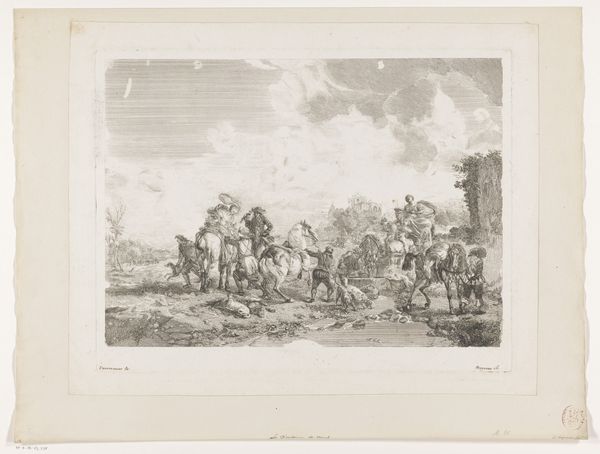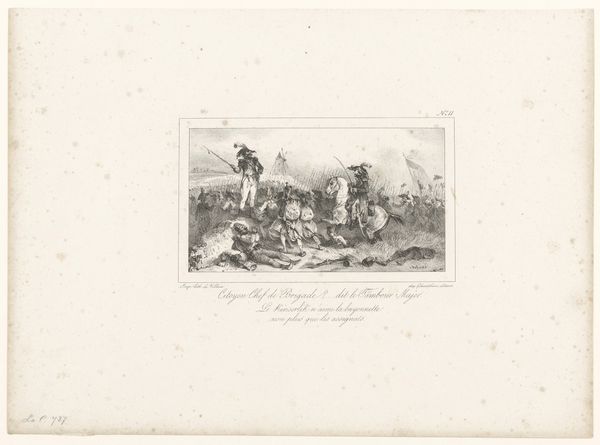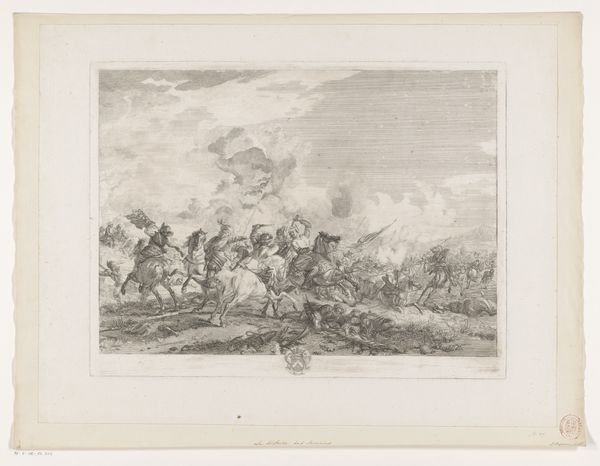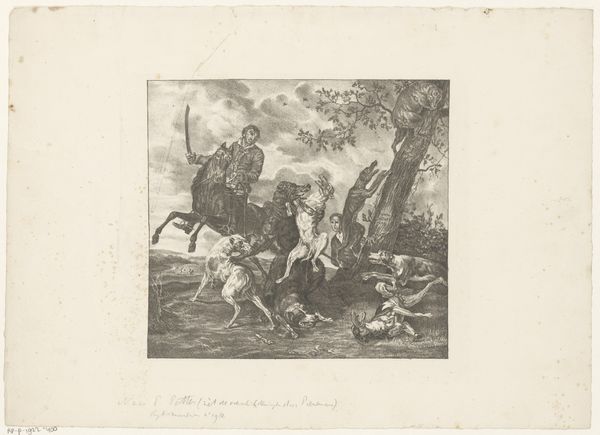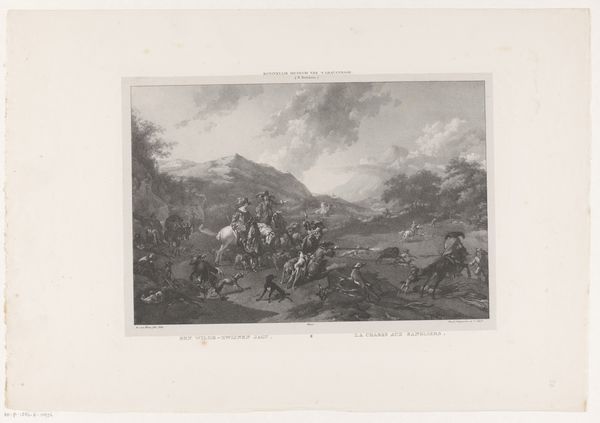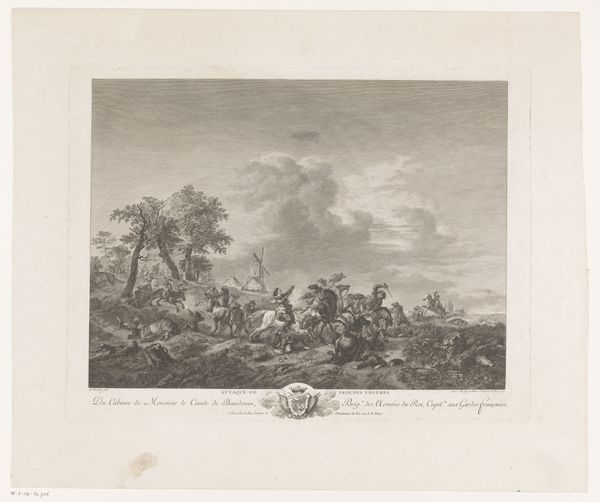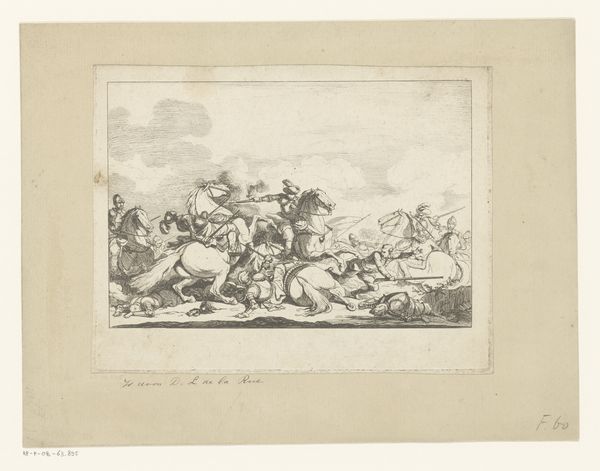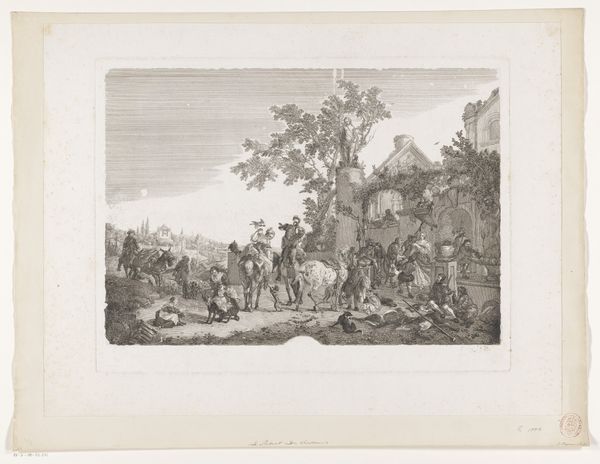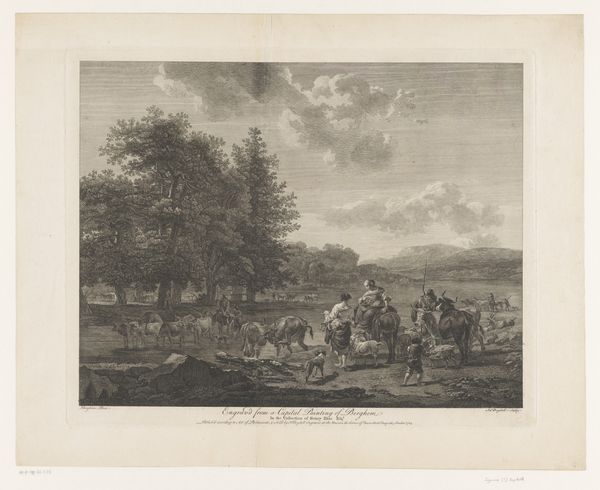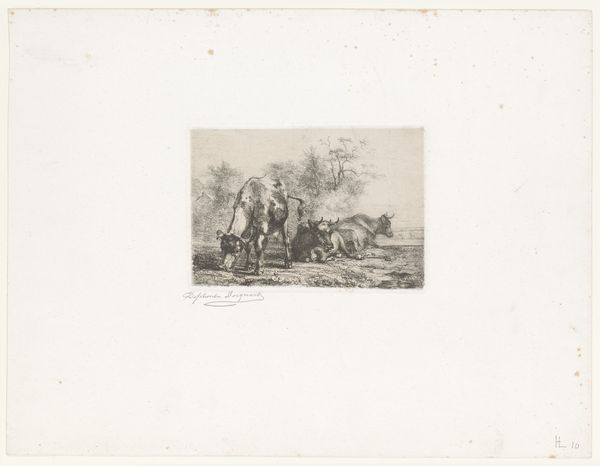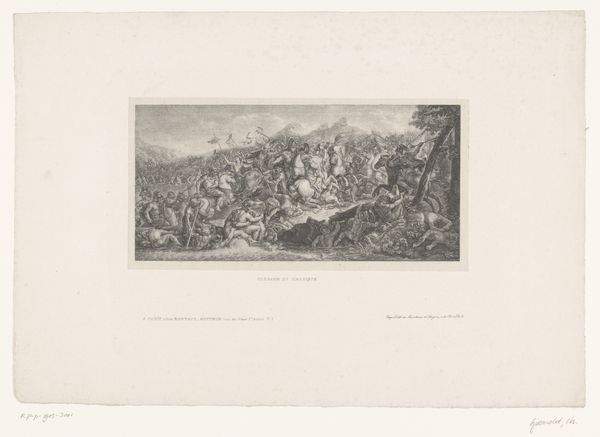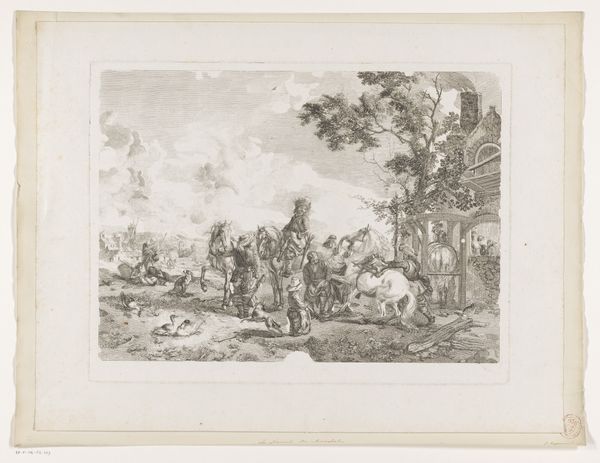
drawing, print, paper, engraving
#
portrait
#
drawing
# print
#
paper
#
romanticism
#
history-painting
#
engraving
Dimensions: height 360 mm, width 540 mm
Copyright: Rijks Museum: Open Domain
Curator: At first glance, there’s an undeniable somber drama radiating from this scene. The figures clustered under that ancient tree seem to be in deep mourning, juxtaposed against what looks like the chaotic aftermath of battle in the background. Editor: Precisely. We're looking at an engraving entitled "Death of Pierre Terrail, Lord of Bayard," a print on paper made around 1822 by Jean-Louis Gudin. It exemplifies the Romantic style, placing emphasis on dramatic emotion over classical restraint. Curator: Yes, Bayard, that "knight without fear and without reproach." He seems to have died in the center there. You see the symbolism immediately; his noble upright posture contrasted with the surrounding chaos and slumped figures highlights Bayard’s stoic virtue. Even in death, he is centered, unwavering. It speaks to ideals of chivalry. Editor: Agreed. But let's also look at how Gudin constructs the scene formally. The use of light and shadow directs the viewer’s eye – from the somber scene in the foreground toward the action taking place further back. The swirling smoke and flags suggest a continued conflict, emphasizing the scale of this man's loss. It's interesting how Gudin is controlling the negative space and light to direct focus. Curator: Absolutely. The chaos in the distance really throws Bayard’s quiet, individual tragedy into sharp relief. One has to consider the cultural weight someone like Bayard held in French memory; seeing that legacy extinguished becomes a really potent symbol. There's a story of national identity at stake here. The figures almost seem to know and recognize his heroic standing; their mourning is almost performative in its scale. Editor: True. There's a deliberate composition at play here, drawing a connection between historical drama and personal grief. The contrast is a study of tonal gradations creating atmospheric effects, amplifying the emotional intensity. Curator: Ultimately, this engraving feels like a powerful statement about mortality, and the cost of honor—speaking through the lens of a specific moment in French history. Editor: Indeed, an intriguing blend of romantic sentiment and formal technique converging to amplify historical meaning.
Comments
No comments
Be the first to comment and join the conversation on the ultimate creative platform.
